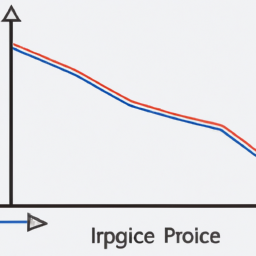Commodities have been making headlines lately, with rising oil and gas prices and record high prices for some raw materials. Despite this, many investors overlook commodities as a potential component of their investment portfolio. However, commodities can offer diversification and a hedge against inflation risk. In this beginner's guide, we'll go over the basics of investing in commodities and how to get started.
Opening an investment account is an essential step in investing in commodities. You'll need to choose a broker that offers commodities trading and open an account with them. Some popular brokers for commodities trading include TD Ameritrade, E*TRADE, and Interactive Brokers. You'll also need to fund your account with money to invest.
Once you have an investment account, you can start looking at the different types of commodities you can invest in. Commodities are typically divided into four categories: energy, metals, agriculture, and livestock. Energy commodities include oil and natural gas, while metals include gold, silver, and copper. Agriculture commodities include crops like corn, wheat, and soybeans, while livestock commodities include cattle and hogs.
Investors can choose to invest in commodities directly or through exchange-traded funds (ETFs). Direct investment involves buying and selling physical commodities, such as barrels of oil or bags of wheat. This can be more complex and requires more knowledge of the market. ETFs, on the other hand, are investment funds that track the price of a particular commodity or group of commodities. This can be an easier way to invest in commodities for beginners.
Commodities trading is different from stock trading in some key ways. For one, commodities are physical goods, which means that supply and demand can be affected by factors like weather, natural disasters, and geopolitical events. This can make commodity prices more volatile than stock prices. Additionally, commodities trading often involves futures contracts, which are agreements to buy or sell a commodity at a future date for a predetermined price. This can add another layer of complexity to commodities trading.
When investing in commodities, it's important to have a fundamental understanding of the market and the factors that can affect commodity prices. This includes keeping up with news and events that can impact supply and demand, such as weather patterns, crop reports, and geopolitical tensions. It's also important to diversify your portfolio, as commodities can be affected by different factors than stocks and bonds.
Investing in commodities can offer a number of benefits for investors. For one, commodities can offer diversification within a portfolio of stocks and bonds, as well as a hedge against inflation risk. Additionally, commodities can provide exposure to different sectors of the economy, such as agriculture or energy.
In summary, investing in commodities can be a way to diversify your portfolio and potentially generate a profit. To get started, you'll need to open an investment account with a broker that offers commodities trading. From there, you can choose to invest in commodities directly or through ETFs. It's important to have a fundamental understanding of the market and diversify your portfolio to minimize risk. With these tips in mind, you can begin your journey into the world of commodities investing.
